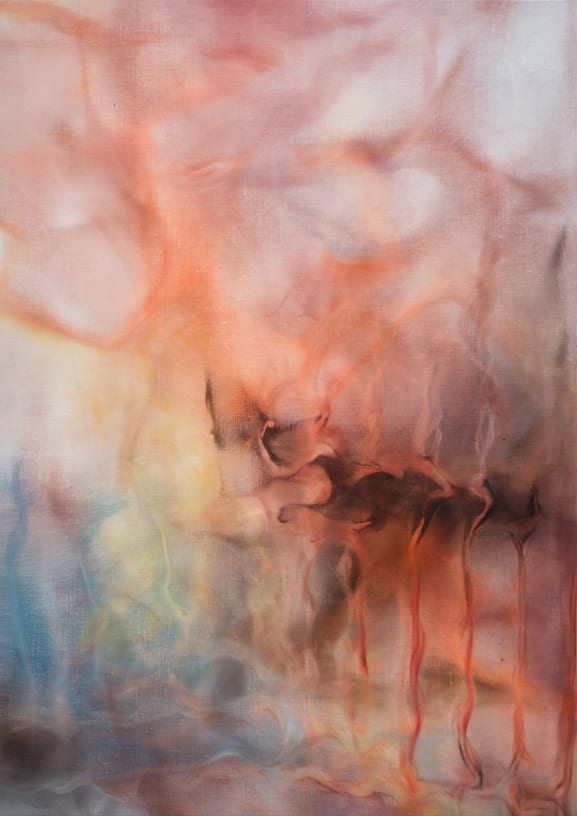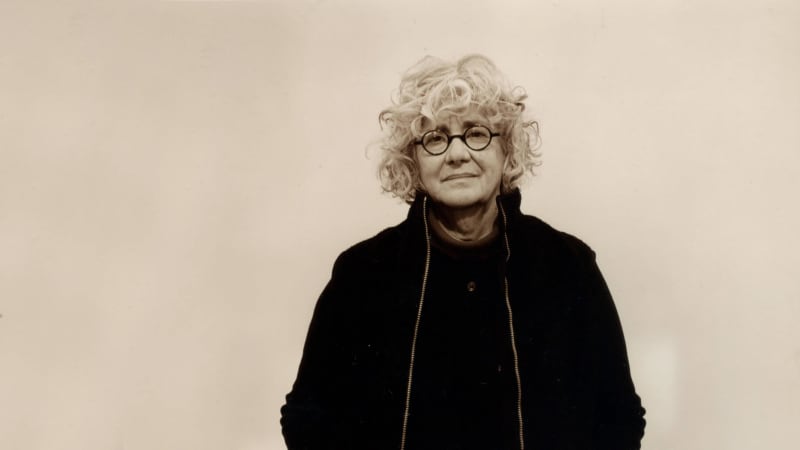Tom Sachs: EXCHANGE 24h performance in Paris . (This link opens in a new tab).
Tom Sachs wants you to take on big banking
The maverick contemporary artist talks us through EXCHANGE, his recent 24-hour performance installation in Paris that parodied global trade systems.
By Mahoro Seward. (This link opens in a new tab).
Walking down Rue Debelleyme in Paris. (This link opens in a new tab). on Saturday, you may have spotted a snaking queue of fans standing in the rain, jostling one another as they waited to enter Thaddaeus Ropac’s Marais gallery. Unlike most of the crowds spotted across the city last week, though, what they were there for had little to do with fashion week. (This link opens in a new tab).. Instead, they’d turned up for EXCHANGE, the latest ephemeral performance-activated installation by Tom Sachs. (This link opens in a new tab)..
The size of this queue speaks volumes about Tom’s cultish reputation — there are few artists working today that have harnessed the power of invention quite as holistically as him. His interactive installations, in particular, are invested with such attention to detail that they playfully blur the boundaries of what’s real and what’s make-believe — often revealing them to be one and the same.
In some of his most powerful works, the targets of his commentary are the social institutions that we so often believe to be bigger than ourselves. In a 24-hour installation staged at Thaddaeus Ropac’s Mayfair space, Tom picked at the seams of citizenship and national identity, selling convincing reproductions of Swiss passports — among the most coveted on the market — for the humble sum of 20 Swiss Franc. Last weekend, Tom and his team took on banking, staging a 24-hour event at the Paris gallery that played out the inner workings of global trade networks.
Once in the space, attendees were encouraged to trade and barter with officials dressed in uniforms designed by Miuccia Prada. (This link opens in a new tab)., surreptitious black market agents, and, if they so wished, each other. Cash was exchanged for ceramic beads, beads for coins, coins for chocolate bullion (well, Reese’s Peanut Butter Cups), which were buoyed by a specially minted cryptocurrency. The values in relation to one another fluctuated over time, with new rates written up on a central chalkboard. Whether you chose to abide by them was up to you, with black and grey market deals offered around the space, perhaps benefitting the individual while jeopardising the stability of the market.
So what was the point of it all? Just fun and games? Well, yes, but then so are the macroeconomic systems in which so many of us implicitly trust. More than a simple parody, though, this was a reminder of the agency and autonomy that we — its players — have within these games; of the fact that if you were able to play it here, you’re able to play it in the real world, too.
Here, the world-building artist fills us in on his disruptive new work, the revolution we’re currently in the midst of, and the cult of Tom Sachs.
How would you introduce EXCHANGE in relatively blunt terms?
Money. (This link opens in a new tab). is an illusion, but it’s one by which we all live and die. And it's based entirely on faith. You believe that a $1 bill has a universal exchange value, and you believe in the banks that support it. But there's no real difference between a $1 bill and a $100 bill — they’re both the same size, and are printed using the same amount of ink, but you have faith in the system that ascribes their value. In this project, we started with money. You began with a €20 note, which you exchanged at the teller for a ceramic bead. You then took that to a trading desk, where that bead was scrutinised and checked for authenticity — because, you know, it could be fake! If all went well, that bead was exchanged for a coin, and then that coin was placed into an automated teller machine that gave you chocolate bullion. You opened it up and inside was a QR code, which, when scanned, delivered 200 Digital tokens per candy bar — meaning that these digital coins were backed by chocolate bullion with real value. Of course, someone might have thought, "Hey, I just want this bead. I'm just gonna leave and take one of these out of circulation", which then changed the value of the system. Or someone could’ve taken one of the coins home to make a necklace out of it. As one instrument of exchange became more or less rare, the values of the others went up and down accordingly.
So what if someone felt a bit peckish, and they just decided to eat the chocolate, for example?
It changed everything. But maybe they didn’t want to open the chocolate bar, and would rather have kept it because they thought it's art. Maybe they didn't want the digital coins. At the same time, any time a bar was taken out of circulation, the accompanying digital coins that it represents were also removed, so that the figure was reflective of the stock. And as the supply of chocolate bullion and digital coins got smaller, they became increasingly rare, sending their value up.
You also facilitated black and grey markets in the space. What was the reasoning for that?
We wanted to introduce some elements of maximum corruption, so that it's a more interesting reflection of how the world is now. And we were looking to make it into a little bit more of a game. We were talking about Guy Debord. (This link opens in a new tab). and the Situationists. (This link opens in a new tab)., and how they were really into games as ways of understanding interactions. Just like 1968, this is a time of revolution — it may be a bloodless revolution, but maybe this time, we'll win. It's clear that we're in the middle of something — even if we’re not sure what that is exactly. But what we do know is that the blockchain is real. It's trustless, which means that everyone can trust it. The information is stored on 1000s of computers, so you can't really corrupt it.
Will the banks and the [US] Securities and Exchanges Commission get together to try and take it out of our lives?
I think they're going to try. But this is a war being fought on the battlefield of ideals, and the best thing that I can do as an individual is to do what I do best, which is to make compelling sculptures and performances. “Art = Capital,” as Joseph Beuys. (This link opens in a new tab). said, and that doesn't necessarily mean money — it means power and influence. That’s why I'm telling all my friends to please make NFT projects, to please engage in the space, to use digital banking when you can. Then, it will become real, and we can take back the system. Or you can just go to Chase and do the rest of your life the way you normally do it. But we have an opportunity here. We might not succeed, but if we don't try, we certainly won't.
In your most optimistic mindset, what do you think can really come of inviting people into a space like this to engage with these ideas firsthand?
Well, when we did the Swiss Passport Office back in 2018, where we made the most authentic Swiss passports that we could for €20, the idea was to make the world the way we want it to be. We took the most prestigious passport, arguably, and made it available to everyone. It was about highlighting that borders, like money, are an artificial construct used by governments, and the corporations that control them, to organise people, usually for profit.
What I hoped to do here is to create an environment in which the notion of trade is laid bare — which is hard to do, because we get so caught up in our everyday lives that it's difficult to reflect on it — and make people understand that it's a game within which you have power and agency, whoever you are. We all have an opportunity within it, and I live by that. I was saved from a miserable life of drudgery through my art. I got really lucky, so I consider it my responsibility to share that with the people around me. My first job is to educate and entertain myself and my community — and today, that community includes anyone reading this. And if you’re reading these words, it means that you believe in what I’ve said enough to not click away. And then the community, the ideas and the values we’ve discussed grow and expand from there. So, in other words, yes, we're a cult!















































































































































































